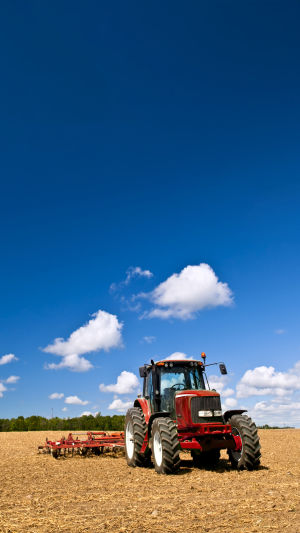Agriculture is a series of hard work, and tractors are the most versatile agricultural machinery.
All kinds of agricultural work can be done by simply replacing the working machinery. Without tractors, farmers would not be able to do large-scale farming work. Indeed, tractors are the driving force behind the work, and they are a great partner that greatly reduces the burden on farmers.
With the popularity and development of agricultural machinery, tractors have played a huge role in agricultural production, such as ploughing, rotary ploughing, sowing, harvesting, and furrowing operations.
The tractor is a versatile agricultural machine that is active all year round. The tractor has a variety of interfaces at the rear that can be loaded and unloaded. They are replaced according to the purpose of the work.
No conventional agricultural cultivation is possible without ploughing. Any agricultural land can be cultivated with a tractor. This is one of the most important uses.
The conventional tillage methods are ploughing and rototilling. Comparison of the two: Plowing is generally 18-22 cm deep, with some being a bit deeper. In general, straw is better buried.
The depth of rotary ploughing is generally between 12-16 centimetres. Because of the shallow depth, the burial effect of straw return is not good.
At present, due to the long-term use of rotary ploughing operations on agricultural land, it fails to carry out deep ploughing and deep loosening operations on the soil, resulting in a decrease in soil water storage capacity and fertility.
Furthermore, the bottom layer of the plough is becoming increasingly harder, impacting the growth of crop roots and causing a decrease in yield. Additionally, tractors can be installed with balers, which allow for quick packing of harvested grass, straw, and other crop stalks. The most commonly used balers are those for cylindrical packing, where hay is wound tightly around the mechanism in the baler by rubber bands or rollers.
The biggest advantage of this method is the possibility of grass storage, also known as grass wrapped in cling film silage.
Agricultural tractors by the form of structure can be divided into hand-held, wheeled, crawler, and special structure 4 categories, the following is an introduction to these types of agricultural tractors.
1. Walk-behind tractor
- Large walk-behind tractor generally refers to 8.8 kilowatts (12 horsepower) above the walk-behind tractor.
- Small and medium-sized walk-behind tractor medium generally refers to 4.4 ~ 5.9 (6 ~ 8 horsepower).
Small generally refers to 2.2 ~ 3.7 kilowatts (3 ~ 5 horsepower).
2. Wheeled tractor
- Small-wheeled tractor refers to the power in 8.8 ~ 14.7 kilowatts (12 ~ 20 horsepower) of the small-wheeled tractor.
- Medium-sized wheeled tractor refers to the power of 14.7 ~ 36.8 kilowatts (20 ~ 50 hp) wheeled tractor.
- Large wheeled tractor refers to the power of 14.7 ~ 36.8 kilowatts (20 ~ 50 horsepower) wheeled tractor.
3. Crawler tractor
- A crawler tractor is also called a chain-track tractor. A travelling device by the guide wheel, follow the wheel, support wheel, drive wheel, and track composition.
4. Special structure tractor
- Special structure tractor is used in agricultural production for special operations tractor.





